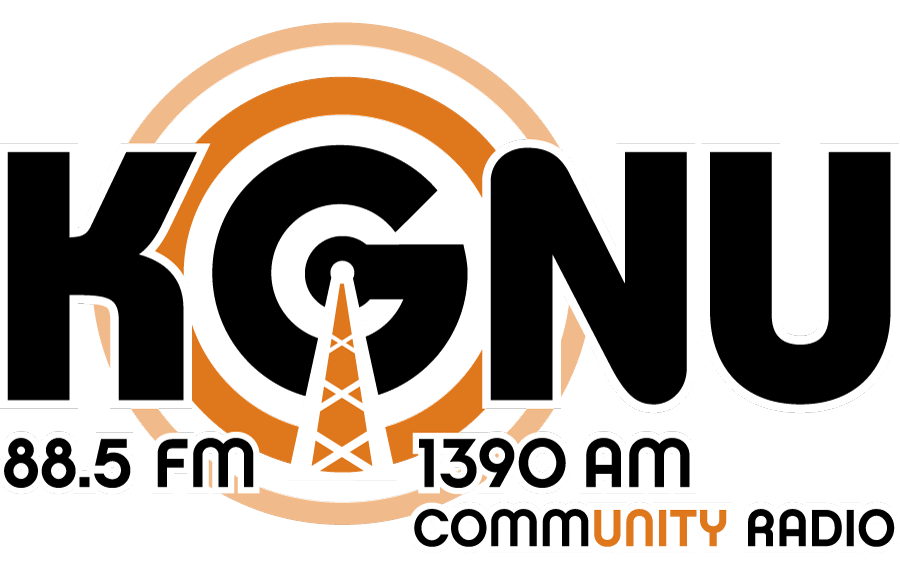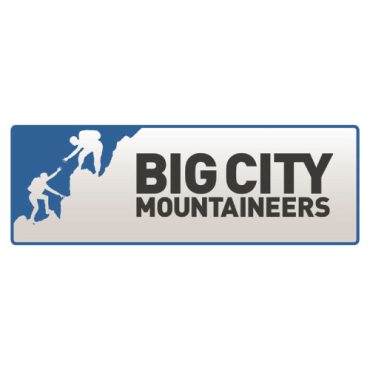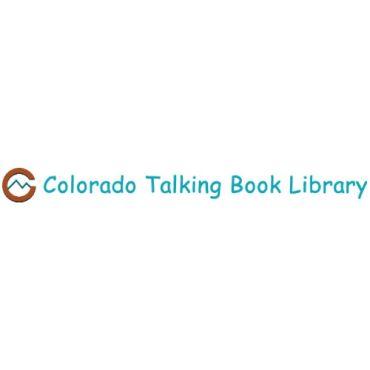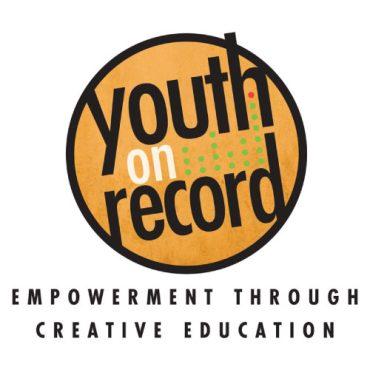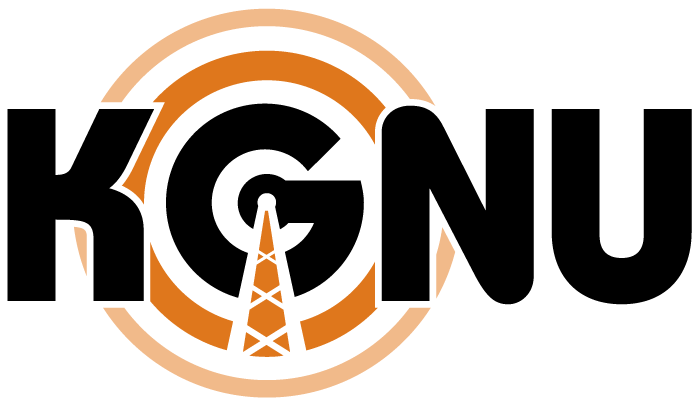Interview: Dom Flemons
Dom Flemons hangs out with Fergus on KGNU.
Transcript:
Fergus: I am joined in the air studio by some heavy banjo weight here. Dom Flemons, welcome, Dom to KGNU. Have you been in our station before?
We talked on the phone before and then of course we got to meet last year when I was over at the university. I saw you giving a presentation at the Grusin Music Hall. I had no idea then that I’d get a chance to have you on my show today, but it’s great to have you and welcome to KGNU.
Rather than going into a lot of introductory stuff right now, I know you just got the thing in tune and you haven’t even warmed up yet. Let’s see what you can do with cold fingers cause you’re not going to get another chance to warm up before I make you start. So let’s go ahead, jump into a tune. Would you please?
Dom: All right, well we’ll get a little bit of Charmin’ Betsy from Henry Thomas
song ends
Fergus: “oh!” The audience goes wild. There’s not enough of us in here to make a big noise, but that was terrific and I’ve got a million questions
As I mentioned earlier, we met at the Grusin music hall, when Mr. Flemons gave a presentation on
American folk music, it was a fascinating presentation just from an informational perspective. I was really taken by your music, your style of performing.
Most often I’ve seen those things [five string banjo’s] played with flat pics and there’s no flat pick anywhere near you. You had a thumb pick and four bare fingers. Whose style is that? Is that your unique style? Did you generate that from first principles or did you learn something from somebody?
Dom: Well, I had a combination of, of teachers and influences. Out in Phoenix, there were a few different banjo players when I was coming up. But I happened to know a fellow out in Flagstaff, Arizona, fellow named JP Beausoleil. He had went on a trip to Europe one summer and he passed me his banjo. It was a five string. He took the fifth string out of it. And at that point I had started playing guitar. I’d been playing for several years and I like the sound of the banjo because my roots as a musician started out playing drums in the school band. And so the banjo had this sort of con connectivity between drums the rudiments of rhythm and then also melody, being able to do the chords on it.
So, that appealed to me. And so I just started grabbing it influences from all over the place. And when I started to listen to Gus Canon’s music, I found that there was a lot of room in which the band, could play a multitude of styles. And so I just kind of developed a style off of that. I heard claw hammer, but I didn’t know that you needed five strings to do it.
I figured out a way to be able to pick it so I could mimic that sound. But yeah, with the fourth string, I’ve always loved that. And you played Boodley BombBomb earlier, and I learned that really easily. In terms of being able to take blues licks because I realized when I was playing the chords at one point, if I do some up picking, you know that you could get some of those bluesy licks in there. Which are things that. When I listened to banjo historically, there weren’t a lot of examples of blues, banjo, but just to be able to experiment with those ideas was appealing to me. So, I just ended up developing my own style over time. I went to North Carolina and learned a little more about the old time banjo and just kept on moving from there. Just developing a whatever made sense for the song.
Now when I was a kid, a teenager, shall we say, I saw a picture of Bob Dylan playing guitar with a harmonica in a harmonica rack, much like the one you’re using there. And so I went out and bought one of those and I was trying to learn guitar at the time that never went anywhere, but the first problem I had was that I kept losing whiskers to the, to the a wing nuts that hold the harmonica in place. And so I pretty much had to give up trying to play anything plus the banjo at the same time. But you whipped those quills out in the only other time I’ve heard quills was on Leadbelly recordings.
They’re not a lot of places where you can learn to play those things well. I’ve seen people playing bigger versions of them from South America and they’re known as pan pipes. I’m sure you’re familiar with that, but tell me how you came to pick up a set of quills and learn how to do that. And particularly to do it while you’re also doing something else.
Well, as I mentioned before, I started the guitar first and then I got deep into Dylan. I’ve, you know, I’m part of a generation that is before the full on digital changeover to where music was completely available. So I grew up with record stores and going and finding out about individual artists and records.
And very early on, I guess I saw the documentary, the history of rock and roll on PBS. And there was an episode on the folk revival and that interested me to listen to the sounds of people like they had Lightening Hopkins and Phil Ochs and Bob Dylan and all these people. And I got interested in that sound. So I started learning how to play guitar and harmonica. When it came to the quills. It wasn’t until about 2005 that I actually found a set. I had listened to the recordings of Henry Ragtime, Texas Thomas and I just loved that sound. And I was trying to figure out ways to mimic it on the harmonica and tried to figure all sorts of ways to do it.
But when I went to the black banjo gathering in 2005, I met Mike Seeger, who was the only person I had seen and that was a living musician playing the quills. And so I asked him about it and I began to visit Mike seeker for last seven, eight years of his life, I’d go and visit him in Lexington, Virginia and we talked a lot about the quills and playing them some of the different stylistic things that we had heard from Henry Thomas, as well as Sid Hemphill from Mississippi. And then there was a third guy, Mike introduced me to Joe Patterson, who performed one year at the Newport folk festival, 1964 and so there are three main guys that I have kind of composited together to create the way that I do a Charmin, Betsy, which is a Henry Thomas number. And so I just started into playing it. When Mike passed away, I then found a new cause that I was one of the few guys that was playing Henry Thomas in that style. And so I’ve kept that on and, and that’s how I started out in the quills.
But I’ve always been interested in smaller random, esoteric instruments. I guess that’s how, you know, being a percussionist, that was something that always drew me in.
Smaller, random, esoteric instruments.
Fergus: I love the bones, the jug, the quills. Well, I started on jug myself and moved to Kazu not long after that.I found an antique one right there. So friends, I’m in the presence of genius here in the air studio this morning, and so I’m doing all I can just to keep my nose above water.
When I heard people, back in the twenties and thirties, playing kazoos on old records, that’s what passed for research in my day was get some old records and listen to them. But I thought, yeah, what a, what a delightful thing to have, you know, to have a 25 cent instrument that you can make music with.Harmonicas used to be 50 cents when I first started buying them. Now they’re over 50 bucks, but that’s a whole other story we don’t need to get.
I want to ask you about research and so on. But I’m kinda ready to hear another song from you if you’ve got one ready to give.
Dom: Sure. Yeah. Well, we were speaking about harmonica. This is one I’ve been playing a bunch recently. So kind of to tell you a little bit about research as well when I’m putting together arrangement. So this is a song that I first heard recorded by Ek Robertson, the early Fiddler from Texas.
And I just loved the, the actual. Fiddle melody, but I can’t play fiddle. It all. That’s the one instrument I really can’t play is the fiddle. So I arranged this one to this fiddle tune onto the harmonica and I decided to put it in the style of Deford Bailey with a lot of tongue blocking and chording, which is kind of for folks who don’t know, you can play one note, but you can do a of blend notes together. Two notes at a time, sometimes three, if you want to get real fancy. But this is a number that I got to play on the grand Ole Opry last year when I made my solo debut over there and I was left in the spot where, because the group you know, the group beforehand, the Chocolate Drops, we were the first all African American string band to perform on the grand Ole Opry.
And so I was trying to figure out a way to present something that would be unique for my own. Personal story that would tell something about the Opry history. So I decided to start out just standing there by myself on the floor of the Ryman and playing a little bit of this one.There’s a Brown skin girl down the road somewhere. So let me go ahead and whip this one up just a little bit here, see if I can get a little bit of that extra opry Gusto.
Fergus: You’re listening to Dom Fleming’s on the morning sound alternative on KGNU.
Song begins/ends
Fergus: Fantastic.
Dom: So that’s an Ek Robertson fiddle tune arranged for harmonica a you put a lot of work into that arrangement. There’s a, there’s a lot going on there. And you mentioned D Ford. Bailey was for years, the only African American on the Grand Ole Opry. And just surprised a lot of people that there was one, even when he was a harmonica virtuoso.
You pulled through, techniques there that I’m only guessing now because I’ve never come across him either. That’s really something.
Fergus: So you learned by learning from other people as well as pushing yourself and just trying things out. I promised you that we’d talk a little bit about research.
You grew up in Arizona and Phoenix, which had, I guess, a music scene, but it was sort of far from, shall we say, the folk scare that was going on in New York city at the time. What were the sources that you had then and how, how did you go from there to, you know, the library of Congress quality research that you’ve done in the last decade or more?
Dom: Well, at first it started out with just buying records and trying to get more information about the music. So, I got into, you know, muddy waters and Helen Wolff and Hank Williams and Charlie Patton and all those different folks. I came of age at a particular time where they were reissuing, not just older recordings, but recordings from the sixties and seventies and they were being repackaged and re presented with a new perspective.
And so I kind of caught the full brunt of. All of these new releases coming out.
So when the CD production capacity exactly exceeded the sales, there was a time to reissue some old LPs. I was deep into LPs at that point. And that was a time before there were players folks that weren’t DJs. You had people that kept their stereos from before and they had their LPs, and then you had DJs more or less. And so I also had the opportunity to go to the bargain bin and be able to find, you know I’d say like all of Leonard Cohen’s collection for $3 or something like that.
I was able to inherit like a 50 year span of popular music, whether it was folk music, traditional music or what not. And I had access to a lot of music just because it was, it was there in Arizona. And so that’s how it started. When I went to college, Northern Arizona university had a beautiful library of all of the RCA vintage, Victor vintage series. I Had all of the library of Congress government issuedLPs and whatnot. And I would just check these things out from the library all of my years in college. So I was just taking in music, learning stuff. I was also jamming and playing gigs and whatnot in Flagstaff.
After I went to North Carolina in 2005, I began to work with a nonprofit music maker relief foundation, that got me in touch with a lot of traditional players that were currently living in North Carolina. I also went to the law of the fiddle conventions, Mount airy, clifftop, and Rockbridge and all those places.
I was able to kind of fill in an experience that before I kind of had the faraway dreams of the East coast, the South or the Northeast when it came to music and all of these different artists that were out there. It was almost like when I read about people of that time, like Jim meeting Mississippi. When I first met Jim Kreskin, He was my Mississippi John hurt. So I was able to find satisfaction in meeting my heroes as well as be able to expand the scholarship of African American folk songs or different pieces of the puzzle, whether it be jazz or folk or blues that needed a little bit of help connecting the dots.
I just made a purpose of doing that, kind of balancing between interpretive music as well as original music. And so that’s what I keep on doing. And also there’s, there’s more research that’s coming out, you know. What I’ve been amazed at is how much information still has not been found that is still being presented back into the public.
I think that we’re at such a golden age for research. So I’m always keeping an ear out for a new sound.
It does seem new ideas and people like you and others are always digging up little nuggets of stuff that throws a new facet onto a life that may have been thought to have been well-researched already.
Fergus: Did you ever hear of the Mississippi mud steppers?
Dom: Bring it on home to your grandma. That just showed up in my life one day, one of the greatest songs I’ve ever heard in my life. Just a brilliant arrangement. Fantastic performances. And with that, just that little element of chaos in there too, that makes it timeless instead of just another cool thing.
Fergus: You’re also a composer. You’ve written, you’ve been writing songs kind of from the beginning. Didn’t you write songs as a, as a youth?
Dom: Oh yeah. Yeah. I’ve always written songs like I had about 10 years where I didn’t really want to present original material cause I found that it was avent garde to have to do original material.And I just, over time, I’ve just found that so many acoustic folk they just, they rely completely on original material all the time. But there is a, a beauty to interpreting some of the old time music and readapting it and refashioning it, and also making it relevant for a current audience.
I’ve found that there’s a value in it even more so now than maybe even five to 10 years ago, I found that there are so many people that are coming up in the ranks that there’s just not an unbroken line of musical culture that there once was. Now in digital, it’s kind of opened it up so everybody gets a chance to hear everything. But at one point when you had to find your individual records, you only had the entry point of whatever you could find. And that in of itself leads the individual on a journey where they can find a musical culture in of whether it’s their own personal journey or if you say, get into jug band music, you can find an extensive culture that it grows around the circumstances in which jug band music was recorded in the 60s or whether it was in the twenties or whatnot.
I’ve always tried to have a little bit of both happening in, in some type of way, you know? When I’m writing a song though now after about 10 years of really doing the interpretive arts, I found that when I’m writing a song, I try to think of songs I really like are artists I really enjoy and try to create a lost record around the artists that I really enjoy. And so that’s been sort of an exercise in my mind to kind of tap into the things I’ve learned in my journey, but also to pull out a new creative spirit out of a tradition of music. And that just seems right in line with the things I’ve learned as I was traveling along. You learn it and then eventually you interpret it and create something new out of it.
Fergus: Well, you’re echoing something. I heard a Utah Phillips say late in his life his critique of the contemporary folk music industry was that everybody was just playing their own songs. So it had become a singer songwriter parade, rather than being about folk music.
Dom: There is a little number of me and my brother rode when we were driving in from the East coast. And, and you know, we all sat through a lot of boring coffee house performances of people who just had to get their own little secrets out there into the world. Not everybody is a great songwriter, but it’s always felt to me that a song that’s lasted for 200 years, that people are still singing has some essential, the strength and magic and power in it that you can tap into and treat audiences to something that is in many ways more powerful than your own truth that you’re trying to uncover.
Fergus: Your album, black Cowboys that you were talking about when I saw you last year, that certainly involved learning a lot of material, but also researching the lives of the people who were involved in that. Did you have to go pretty far afield for those kinds of things?
I know your grandfather was in Northern Arizona, wasn’t he? you’ve been out here and your family had been here quite a long while, but you had to go into some pretty out of the way places to dig up the material on Black Cowboys, which was really a major project. I mean, Smithsonian got behind it and you gave a lot of talks about that, Like the one you gave here?
Dom: The thing that’s been interesting now is that the, it’s reverberating back into the local communities. So when I’m going to different venues, one type of venue is our Western museums, which they’re a bunch of them around. And it was, it was my hope that I’d be able to get this in the gift shop of those various museums. Because, there’s always been a notion to correct what has been misplaced in history and a lot of the Western museums, the historians are trying to figure out a way to bring this, bring it all back together in a general sense. So it’s been interesting to see the reverberations as I go to a place on presenting my story.
The local communities are presenting their stories at the same time, like I was just in Gillette, Wyoming and the fellow who had me out found all this information about black Cowboys of Gillette, Wyoming. In the end there was quite an elaborate black history of the state of Wyoming. But of course, if you’d go there now, you wouldn’t necessarily know that. But those are the sort of things I’m seeing with this project.
But for me, when it came to putting the album together, I was trying to first think about how could I make it appealing. Cause that was one thing I found with a lot of the research material. Like what people like John Lomax and Jack Thorp, they were conscious of saying we want to try to make it popular because it was a type of music and it was a sort of social background that was looked down upon during its time.
So, the idea of being able to put together a popular collection of songs that would reflect African American, not just Cowboys. But as I began to research, I found that it was a bigger story of westward migration. And so that was where my family story reached into it. I’m half African American and half Mexican American on my mom’s side, so we’re six generations Phoenix on my mom’s side. My Dad’s parents, they came out from Eastern Texas and little rock, Arkansas, and came over to Northern Arizona to follow the saw millwork.
When I started to delve into the story of westward migration, I found a lot of my family’s story within that, even though I wouldn’t say that I had ever talked to them about black cowboys are westward migration as a bigger theme, but I knew that was part of their lives and they spoke about that. So it was a very interesting exercise of saying, okay, black Cowboys, who are they? What are they? Why? Why were they in the West? And then why haven’t I heard about them? So it was a kind of a, a series of questions, and then the final one was what did the music sound like?
I ended up going to a bunch of different sources and finding some songs that were associated with black cowboys, like home on the range, for example, is a song that was collected by John Lomax from a black cowboy in San Antonio and the version that this black cowboy is saying, john Lomax had transcribed into sheet music, and that is the Western national Anthem we know now. So like a song like that was one goodbye old paint was another one. Jess Morris, the white Fiddler who recorded it for John Lomax mentioned that he learned it from an ex slave named Charlie Willis, who worked on the range with him.
There were a couple of those stories within it. I even found when I went to the national cowboy poetry gathering in Elko for the first time. Don Edwards, the great cowboy singer, he introduced me to a book pardner of the wind, which is the autobiography of Jack Thorpe, who was the very first person to make his own Cowboy songbook two years before John Lomax.
And in that autobiography, the first thing he mentions is he goes on, he goes out on the range coming from upstate New York down to New Mexico. He walks into the camp and sees a bunch of black cowboy was sitting and singing a song about their horses and it, the song, the tone, the way they sang, it appealed to him so much he needed to write it down.
And so he then found out that none of the Cowboys knew more than two verses at a time on any given song. So he then had found himself on a quest to find all of the verses to song of the Chisholm trail, which has a thousand verses to it. But he started because he heard these black cowboys singing in a way that he described as being a reflection of the loneliness on the range, the feeling of being away from one’s home and the feelings you get when you’re out there on the range, which to me translate into, he’s here in the blues, a tonality of the blues somehow, even though it’s not blues music, there’s a tonality that’s different than the other songs that he very explicitly says,”I didn’t want work songs that didn’t want these types of songs and these types of songs, but this one song. This was the one that did it.”
I tried to take that sort of approach on the whole album. Like for example, one song on there that started out as a, the song black woman, which was collected by John Lomax, and it wasn’t classified as a cowboy song, but when I began to look at the lyrics again I was putting the project together, I thought it made a very compelling story for black Cowboys as well as black women of the West.
Fergus: It’s kind of funny. I remember Lomax saying when he went down to the Appalachians and was recording string bands and so on, he said there were very few string bands knew more than two or three tunes together other than the skillet lickers it was hard to find a group that actually had a whole set of stuff that they could play properly we, you know, at this great remove in time from all of that, a hundred years later, we just sort of assume everybody knew a thousand tunes like a fiddle and John Carson went from there. So that’s a really, insightful bit. You mentioned there that nobody knew more than two verses to this song, I have to say I love your performance of a goodbye paint
I wonder with your dual heritage, Charles Badger Clark went down and spent some time in Arizona in the early years of the 20th century to get over tuberculosis, which had ravaged his family and wrote the Spanish is the loving tongue. Is that in your repertoire? Do you do that one?
Dom: Oh, that’s not in my repertoire, but I’ve always loved the song. Yeah. Light is a spanish is loving tongue soft is beauty in lightest spray
Fergus: It creates a picture for me. Old guys sitting in the, in the chair around the, around the potbelly stove in the bunkhouse telling his younger compadres just what life is about. So I was hoping maybe to get that one out of you, but do you have another, did you bring another song you might share with us this morning?
Oh, sure. We’ll sing a little bit of Black Woman for you. It’s a funny thing. When we were writing the liner notes for it, of course the recording was the quickest part. It took about a year and a half to write these liner notes in, my wife helped to write parts of it. This is just kind of the serendipity of the project in general. So I had black woman’s set in place as a song I wanted to have to be a part of this record, but I was having a lot of trouble finding information about black women in the old West and we went to go visit,
Dom: I started to read more about women in the West, it was interesting to find that many of them were proprietors and that there were people that came in and helped civilize the towns. And so if you look at it strictly as a cowboy story, you would miss the women almost like the, the forest for the trees in a certain way. Because, and again, if we, if we all think back on cowboy movies, it’s, it’s always sort of an educated ranch woman that the cowboy is marrying, and there’s a reason for that.
And so with African American women in the West, and we were visiting, My wife’s grandmother, and she was a reading specialist in Pullman, Illinois, over at over near Chicago and a part of the Pullman porters community. And so we mentioned black Cowboys, and she said, “Oh yeah!” And she grabbed my wife’s uncle and said, “Harold, get the black women of the West book out.” So she pulled out a book by William Lauren Katz, who also wrote a book called black Indians, which is a great book as well for folks that want to get deeper into some of this Western history.
It was an elaborate story of educated women coming from different parts of the East. They would make a strong, sometimes a religious community, other times a Goodwill society. Then, they would build up the towns one step at a time. So this compelling story started to evoke itself just from this book. And then it connected with this song black woman, which was recorded by Vierra Warhol. So here’s a little bit of black woman here
Song ends
Fergus: Wow friends, you’ve been listening to Dom Flemons on the morning. Sound alternative here on KGNU I have a million more questions, but we got a program to do and the first thing I have to do is to say you’re listening to KGNU Boulder, Denver and Fort Collins. You are here. Right now for the Trance Blues Festival. Please give me some data on that. What time today and where, what, what will you be when and where will you be performing?
Dom: Well, this time around, I’m only going to be a part of the banjo panel that’s going to be going on today, that’ll be around, I believe, five o’clock over at the Case building, if I’m not mistaken, and When I got invited out it’s, it’s going to be a wonderful panel, talking about sort of the way that artifacts and items from one’s life tell a lot about the culture that surrounds that life. And so African American music is very much driven by some of` that notion in of itself.
Fergus: Fantastic! Friends there’s a lot of information out there that could be coming your way. So I want to say thank you, Don Flemons!
Dom: It’s going to be great.I ended up, well actually after the panel, I’m going to be jumping back on tour with them with rev, Peyton’s big damn band and JD Wilkes. So I had that tour set in place and then Otis called me literally the day after I had set this tour in place. So I’m so sad to miss the Trance Blues Fest cause I’ve, I’ve known Otis for a quite a while and, and just I’ve wanted to make it out for the festival and hopefully, hopefully next year we can, we can try to get something worked out cause that would be just amazing to me.
I don’t know if he knows this. But, I used to see him in 1971 or 72 sitting under a tree in central park, playin his banjo. I knew he used to play the cuckoo. That was one of his tones, and it may have been as late as,75 or six. But I remember seeing him a long, long time ago.Sitting out in the park. Sharing his banjo with the, with the folks. So,I’ve been here a long time and we have both been in the West our whole lives. Pretty much. You went off to the lousy weather of the, the East but it’s good to have you back out here in the sunshine.
Fergus: Thanks so much for taking time out of your day and coming and joining us. Dom Flemons, ladies and gentlemen, we’ve got some messages to get to you and we’ve got another band. It’s waiting in the kabaret room. There’s going to be a little bit more banjo going on here. So thanks Dom, and we hope to see you later today and just down the road.
